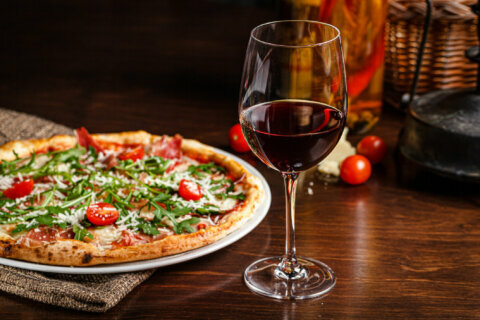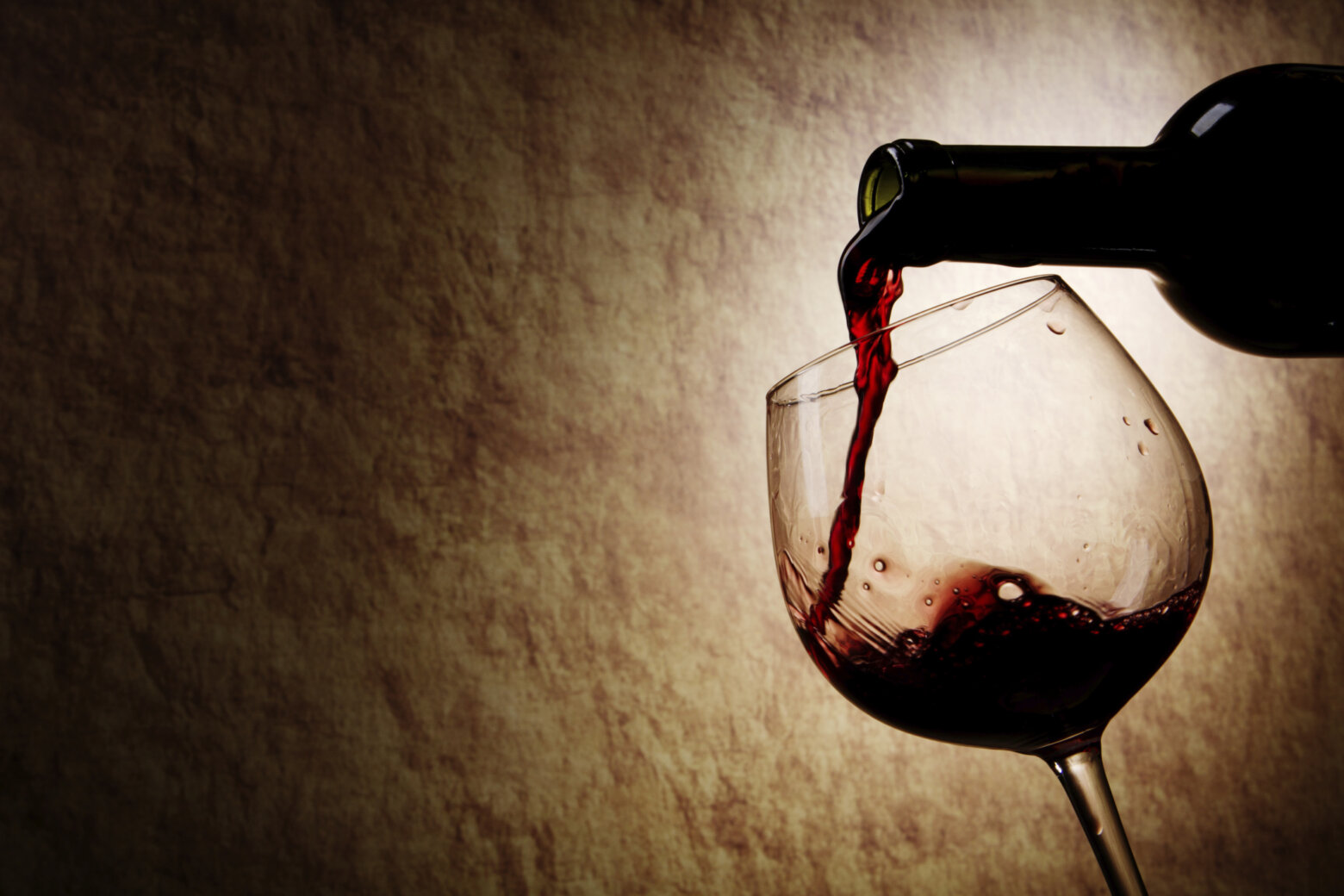WASHINGTON — This Valentine’s Day, love is not only in the air, it’s in the bottle too. And what better wine to fall in love — or stay in love — than a bottle of bubbly.
But not just any bottle of bubbles: This year, give your significant other bubbly rosé.
Be it rosé Champagne, that wonderful fizzy stuff found only in the French region’s namesake, or an equally interesting sparkling rosé wine from another part of the world, no other wine declares with such authority and passion “let’s celebrate” more loudly than the distinctive pop of the cork of a bottle of pink bubbly.
Rosé wines are not a specific varietal, but rather they are a style of wine that generally ranges in color from soft pink to light purple, depending on which grapes are used and the winemaking technique employed.
Traditional red wines get their color from lengthy contact between the juice and the red grape skins. One of the most popular methods for making rosé is saignée — literally “bleeding” — where the grape juices are bled away from the skins soon after the grapes are crushed. The longer that the skins are left in contact with the juice, the darker the wine will become.
Sparkling rosé wines can be produced using either a single red grape varietal or a blend of several different grape varietals. Many different wine grapes lend themselves to rosé production. In Champagne, rosé wines are made with mostly Pinot Meunier and /or Pinot Noir, but I have enjoyed sparkling rosé wines from other regions made from varietals including Grenache, Syrah, Sangiovese and even Malbec.
The pink color of rosé comes from limiting the time that the grape juice comes in contact with the red grape skin — typically just a day or two. The qualities I look for in a rosé wine are fresh red fruits flavors — running along the lines of strawberry and raspberry — crispness, and abundant acidity.
And just like the ubiquitous nature of love, sparkling rosé wines can be found in just about every wine grape growing in the world. Best of all, many sparkling rosés are a relative bargain and can be found in plentiful supply.
Sparkling rosés
Hailing from the Friuli Venezia Giulia and Veneto regions of Northeastern Italy, the Ruffino Sparkling Italian Rosé is produced predominantly from prosecco grapes and made in a crisp, extra-dry style. It has a beautiful pink hue with fragrant notes of strawberry and hints of rose petals. On the palate, this wine has crisp, refreshing acidity and elegant bubbles, offering pretty flavors of red berries, white nectarine and ripe peaches that linger through the finish. Bright, aromatic and fruity, it is the perfect wine to serve as an aperitif. $12
Another wonderful sparkling rosé from the Veneto region of Italy is the Non-Vintage Bisol Jeio Cuvée Rosé. It is a delectable sparkling rosé made from a combination of merlot and Pinot Noir grapes from vineyards on the steep hills of the Veneto. This rosé has excellent balance and a unique personality with vibrant scents of floral notes, such as rose petals and violets on the nose. Flavors of raspberries and red strawberries are supported by a slightly citrusy frame with hints of lychee. It is an ideal choice to enjoy with chocolate covered strawberries and other chocolate-centric desserts. $16
I think that sparkling rosé wines from the Alsace region of France provide great value, and the Non-Vintage Willm Cremant d’Alsace Brut Rosé is an excellent example. Made by one of the most distinguished producers of sparkling wines in Alsace, France, this Brut Rosé is made from 100 percent whole cluster hand-picked Pinot Noir grapes and vinified in the “method traditionnelle.” The result is a beautiful wine, sporting a light pink salmon color and flavors of strawberry and wild cherry fruit, with just a touch of richness on the mid palate. It is balanced with dry, crisp acidity and complimented with a creamy texture and long strawberry-laden finish. $18
Rosé Champagnes
Hailing from the highly-esteemed Champagne House, the Non-Vintage Palmer Brut Rosé Réserve is unusual since it is made using 50 percent Chardonnay, 40 percent Pinot Noir and 10 percent Pinot Meunier. It is aged for four and a half years before it is released which produces a complex rosé Champagne that is round and ample, with aromas of pear, toasted hazelnuts and brioche. The palate is layered with flavors of citrus, ripe strawberry, rhubarb and baked apple upfront and ends with notes of baked bread on the long, fresh finish. A pleasant aperitif or lovely accompaniment with dessert. $52
Just in time for Valentine’s Day, Moët & Chandon is producing a limited-edition bottling of the House’s iconic Rosé Imperial all dressed up in a radiant pink “emoji” label. The Moët & Chandon Rosé Imperial Emoji Bottle, with matching Emoji Gift Box, is more than just a pretty package. It is pretty on the inside as well, with red fruit aromas of summer raspberries and cherries on the bouquet and flavors of tangerine, red plum, and raspberry on the palate. The bright, delightfully fresh acidity on the finish makes it an excellent companion with smoked salmon canapés. $50
If you want to kick it up a notch and add a touch of style and sophistication to your romantic evening, try the Moët & Chandon Grand Vintage Rosé 2008. This is an exceptional value in a vintage Rosé Champagne. The nose features ripe strawberry and dark cherry notes. The mouthfeel is elegant and refined, with finely tuned bubbles carrying flavors of Bing cherry, raspberry and grenadine over the entire palate, ending with a crisp, dry and refreshing finish. This wine is versatile enough to enjoy with romantic toast or throughout the entire meal. $69
The Non-Vintage Cuvée Rosé Laurent-Perrier is one of the most recognized rosé Champagnes in the world. Produced using 100 percent Pinot Noir and made by the saignée method, it is aged in dedicated cellars at the famed Champagne house for at least four years. It has beautiful aromas of fresh strawberries, raspberries and black cherries on the nose and bright flavors of red currant, strawberry and red berry flavors on the expansive palate. The long finish is bone dry yet balanced thanks to the pitch-perfect acidity. $75
Weighing in on the more powerful end of the scale is the Non-Vintage Charles Heidsieck Rosé Réserve. Produced using a blend of 40 percent Pinot Noir, 35 percent Chardonnay, 25 percent Pinot Meunier, this sophisticated wine features bubbles that carry rich aromas of strawberry jam and warm gingerbread on the nose. The commanding mouth feel features flavors of raspberry liqueur, red fruits, dried flowers and blood orange. The sensation is deliciously rich, concentrated and elegant with a citrusy finish that keeps it fresh and crisp. $80







